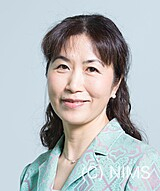题目:Solar-driven Carbon Recycling: Recent Progress and Future Prospects
主讲人:叶金花 教授,日本国立材料研究所 (NIMS)
时间:2023年7月18日(周二)10:00
地点:霞光楼220会议室
邀请人:麦亦勇 教授

Biography:
Prof. Jinhua Ye received her BSc from Zhejiang University, China, in 1983, and her Master and Ph.D. from the University of Tokyo, Japan, in 1987 and 1990, respectively. She once worked in Osaka University as a faculty staff for a year and a half, and then moved to National Research Institute for Metals (former name of NIMS) in Oct., 1991. She has been the Director of Photocatalytic Materials Center from 2006-2011, and the Director of Environmental Remediation Materials Unit of NIMS from 2011-2016. She is now a Principal Investigator at International Center for Materials Nanoarchitectonics (MANA), National Institute for Materials Science (NIMS). She is also a Professor of Joint Doctoral Program in Graduate School of Chemical Science and Engineering, Hokkaido University, Japan from 2008, and the director of TJU-NIMS International Collaboration Laboratory, Tianjin University, China, since 2011. Her current research interests focus on the research and development of photo functional materials and their applications in the fields of environment preservation and new energy production. Her research activities can be evidenced by more than 600 high-quality journal publications (including Nature, Nature Mater., Nature Catal., Nature Commun., J. Am Chem. Soc., Angew Chem., Adv. Mater., etc), which have been cited over 56,000 times (h index: 122). She has been admitted as a Fellow of the Royal Society of Chemistry since 2016, and also selected as 2016, 2018-2022 Highly Cited Researcher (Clarivate Analytics), 2022 Pioneer in Energy Research (ACS Publications). She is currently serving as the Associate Editor of ACS Nano, and Science Advances (AAAS).
Abstract:
Solar-driven carbon recycling will become a dominant trend toward alleviating extreme climate change and coping with the increasing energy demand in the coming years. Solar-driven strategies have the potential to convert CO2 and solar energy to fuels and chemicals. In last decades, we have advanced a ‘‘net-zero emission’’ blueprint by sorting out the raw sources, potential products, feasible pathways, and practical implementation through photocatalysis, photothermal catalysis, and photoelectrochemical catalysis techniques. We comprehensively developed various works in this framework, including solar driven C1 fuel production from CO2, as well as direct and stepwise C2+ fuel production involving solar-driven C1 conversion. It provides the most feasible pathway forward and finds that converting CO2 with renewable H2 into C1 can currently obtain the best solar-to-fuel conversion efficiency and that stepwise C2+ fuel production can target products with high selectivity. This talk will review the solar-driven carbon recycling strategy developed by us as well as future visions on scientific, technological, and economic issues are put forward to determine what should be the focus in the following decades.
References
[1] Lin H, Luo S, Zhang H, et al. Toward solar-driven carbon recycling. Joule, 2022, 6(2): 294-314.
[2] Song H, Ye J. Photothermal tandem catalysis for CO2 hydrogenation to methanol. Chem, 2022, 8(5): 1181-1183.
[3] Li Y, Bai X, Yuan D, et al. Cu-based high-entropy two-dimensional oxide as stable and active photothermal catalyst. Nature Communications, 2023, 14(1): 3171.
[4] Wang S, Jiang B, Henzie J, et al. Designing reliable and accurate isotope-tracer experiments for CO2 photoreduction. Nature Communications, 2023, 14(1): 2534.
[5] Yu X, Xu J, Wang J, et al. Mimicking photosynthesis: A natural Z-scheme photocatalyst constructed from red mud bauxite waste for overall water splitting. Angewandte Chemie, 2023, 135(19): e202302050.



